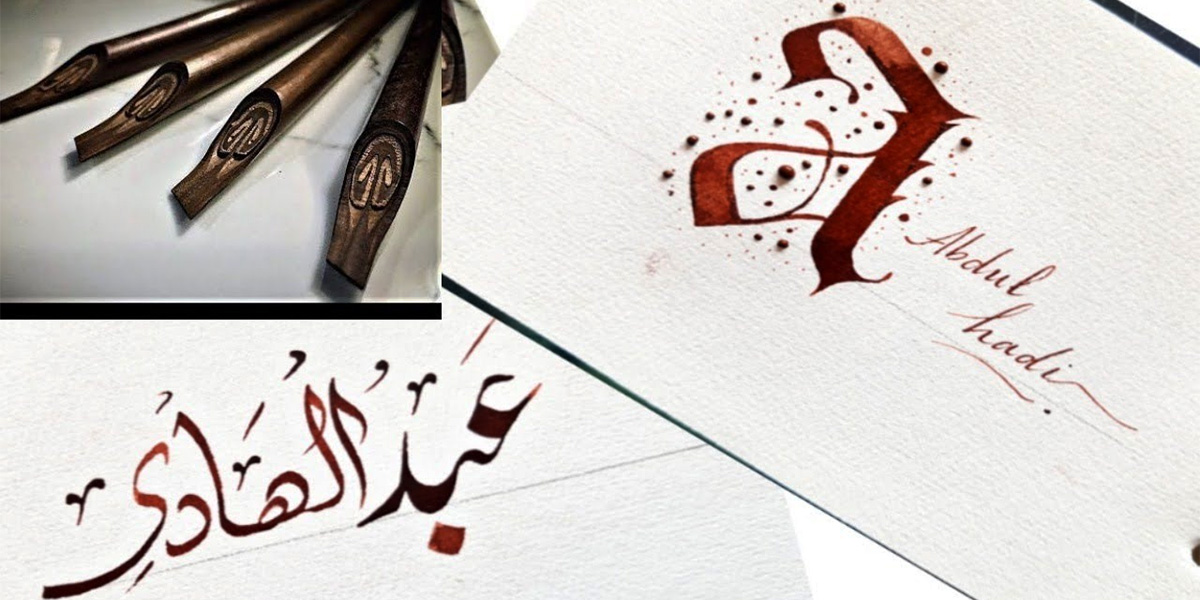
The historical roots of penmanship can be traced back to ancient Egypt, where hieroglyphics were used for writing. Over time, various cultures and civilizations developed their own writing systems, such as the Chinese and Arabic scripts. These scripts showcased intricate calligraphy, which served as a form of creative expression and communication.
Penmanship and typography have been significantly influenced by cultural, societal, and technological changes. The invention of the printing press by Johannes Gutenberg in the 15th century revolutionized the way information was shared, leading to the widespread use of typography in print culture. The advent of digital technology further transformed typography, as designers now have access to a vast array of tools and resources to create visually appealing and functional typefaces.
Throughout history, penmanship and typography have played essential roles in art and design. From illuminated manuscripts to modern graphic design, these elements have shaped visual culture and left an indelible mark on society. They continue to evolve in the digital age, where personal and professional communication relies heavily on digital platforms and tools.
What Are The Historical Origins Of Penmanship And How Has It Evolved Over Time?
Penmanship and typography have deep historical roots and cultural significance that can be traced back to ancient civilizations. These art forms have evolved over time, reflecting the changes in society, culture, and technology.
The historical origins of penmanship can be traced back to ancient Egypt, where people used reed pens to write on papyrus. The early forms of penmanship were primarily used for administrative and legal purposes. Over time, various writing styles, such as the Greek uncial and Roman square capitals, emerged, reflecting the cultural and artistic developments of their respective societies.
As time progressed, the development of the fountain pen in the 15th century allowed for a more fluid and elegant form of penmanship. The introduction of the printing press in the 15th century also led to the standardization of typography. Typography evolved from the early Gutenberg print to the more decorative and elaborate blackletter style, and eventually to the more modern and legible sans-serif and serif typefaces we know today.
The cultural significance of penmanship and typography lies in their ability to express creativity, communicate ideas, and preserve history. Handwritten letters, manuscripts, and artwork showcase the personal touch of the individual and provide a tangible connection to the past. Similarly, typography has played a crucial role in the development of literature, education, and mass communication, shaping the way we perceive and interact with information.
In essence, the historical roots and cultural significance of penmanship and typography are deeply intertwined with the evolution of human civilization. From ancient Egypt to the modern digital age, these art forms continue to evolve and adapt to the changing needs and desires of society.
How Has Penmanship Been Used In Different Cultures And What Is Its Significance?

The historical roots and cultural significance of penmanship and typography can be traced back to ancient civilizations, where writing was primarily done by hand using various writing instruments such as reeds, brushes, and quills. Penmanship, or the art of handwriting, has played a significant role in human communication, education, and cultural expression throughout history.
In ancient Egypt, for instance, hieroglyphics were meticulously crafted by skilled scribes who held prestigious positions in society. In ancient China, calligraphy emerged as a highly revered art form, with its unique brushstrokes and styles reflecting cultural values and aesthetics. Similarly, in ancient Greece and Rome, the art of writing was closely tied to education, and beautiful penmanship was highly valued.
Penmanship has been used in various cultures across the globe, from the intricate Indigenous Australian bark paintings to the elaborate Persian calligraphy that adorned royal documents. In Islamic culture, the art of calligraphy holds great spiritual significance, as it is believed to be a way of connecting with the divine through the beauty of written words.
Throughout history, penmanship has not only served as a means of communication but also as a form of artistic expression. The design and style of a written script can reflect the cultural values, social norms, and artistic preferences of a particular time and place. As typography emerged with the advent of the printing press, it furthered the role of penmanship in shaping the visual identity of various societies and cultures.
In conclusion, the historical roots and cultural significance of penmanship and typography are deeply intertwined with the development of human communication, education, and artistic expression. By examining the ways in which different cultures have utilized penmanship and typography, we can better understand the unique role these practices have played in shaping our world.
What Is The Relationship Between Typography And Print Culture, And How Has It Changed Over Time?
The historical roots and cultural significance of penmanship and typography can be traced back to ancient civilizations. Penmanship, or the art of writing by hand, has been a fundamental aspect of human communication for thousands of years. The earliest forms of writing were found in ancient Sumer, dating back to around 3400 BCE, and were written using cuneiform script. Over time, various writing systems and scripts were developed, such as hieroglyphics in ancient Egypt and the Roman alphabet.
Penmanship evolved as a skill that was passed down through generations, with scribes and calligraphers perfecting their craft to create beautiful and intricate handwritten works. The development of the printing press in the 15th century revolutionized the way information was disseminated, and the focus shifted from penmanship to typography. Typography is the art and technique of arranging type to make written language legible, readable, and visually appealing.
The relationship between typography and print culture has changed significantly over time. As technology advanced, so did the way we produced and consumed written materials. The introduction of digital printing, desktop publishing, and the internet has made it easier than ever to create and share written content. This has led to a shift in focus from traditional typography to digital typography, which encompasses font design and layout for digital platforms.
Despite these changes, the cultural significance of penmanship and typography remains. Handwriting and calligraphy continue to be appreciated for their beauty and uniqueness, while typography remains an essential aspect of graphic design and communication. In essence, the historical roots and cultural significance of penmanship and typography are intertwined, as both have played crucial roles in shaping human communication throughout history.
How Have Penmanship And Typography Been Used In Art And Design Throughout History?

The historical roots and cultural significance of penmanship and typography can be traced back to ancient civilizations, where they were primarily used for communication, record-keeping, and artistic expression. Penmanship, or the art of handwriting, has its roots in ancient Mesopotamia, where the cuneiform script was developed using a stylus on clay tablets. Over time, various cultures and civilizations, such as the Egyptians, Greeks, and Romans, developed their own writing systems and styles, with penmanship becoming a highly-valued skill.
Typography, on the other hand, has its origins in the invention of the printing press by Johannes Gutenberg in the 15th century. This revolutionary technology allowed for the mass production of printed materials, and as a result, typography evolved to include a wide range of fonts and styles. Throughout history, typography has played a crucial role in the dissemination of information, as well as in the artistic realm, where it has been used to create visually appealing designs and communicate specific messages.
Both penmanship and typography have been used in art and design throughout history, with notable examples ranging from illuminated manuscripts in the Middle Ages to the intricate calligraphy used in traditional Chinese and Japanese art. In the modern era, penmanship and typography continue to be used in various forms of art and design, such as logos, branding, and even hand-lettering, which has gained popularity in recent years due to its unique and personalized nature.
In essence, the historical roots and cultural significance of penmanship and typography are deeply intertwined with the development of human communication and artistic expression. As we continue to evolve and adapt to new technologies, it is essential to appreciate the beauty and importance of these ancient art forms in shaping our modern world.
What Is The Cultural Significance Of Penmanship And Typography In Modern Society?
The historical roots and cultural significance of penmanship and typography can be traced back to ancient civilizations. Penmanship, or the art of writing by hand, has been an essential skill for recording information, communicating ideas, and preserving knowledge throughout human history. From hieroglyphics in ancient Egypt to the intricate calligraphy of the Middle Ages, penmanship has played a crucial role in the development of human civilization.
Typography, on the other hand, is the art and technique of arranging type to make written language legible, readable, and visually appealing. It has its roots in the ancient practice of carving inscriptions into stone and metal. Over time, it evolved into the modern practice of designing and arranging typefaces for printed materials.
Both penmanship and typography hold significant cultural value in modern society. They are essential components of artistic expression, communication, and the preservation of our cultural heritage. In the digital age, penmanship and typography continue to evolve and adapt to new technologies, such as digital calligraphy and font design.
In modern society, penmanship is still considered an essential skill for personal and professional development. It fosters creativity, discipline, and self-expression. Moreover, the cultural significance of penmanship can be seen in the growing popularity of hand lettering and calligraphy as a form of art and self-expression.
Typography, too, remains an integral part of our daily lives, shaping the way we perceive and interact with written information. From advertising and branding to book design and digital media, typography plays a critical role in conveying a message and capturing the reader’s attention.
In conclusion, the historical roots and cultural significance of penmanship and typography are deeply intertwined with the progression of human civilization. Both skills continue to hold great importance in modern society, shaping the way we communicate, express ourselves, and preserve our cultural heritage.